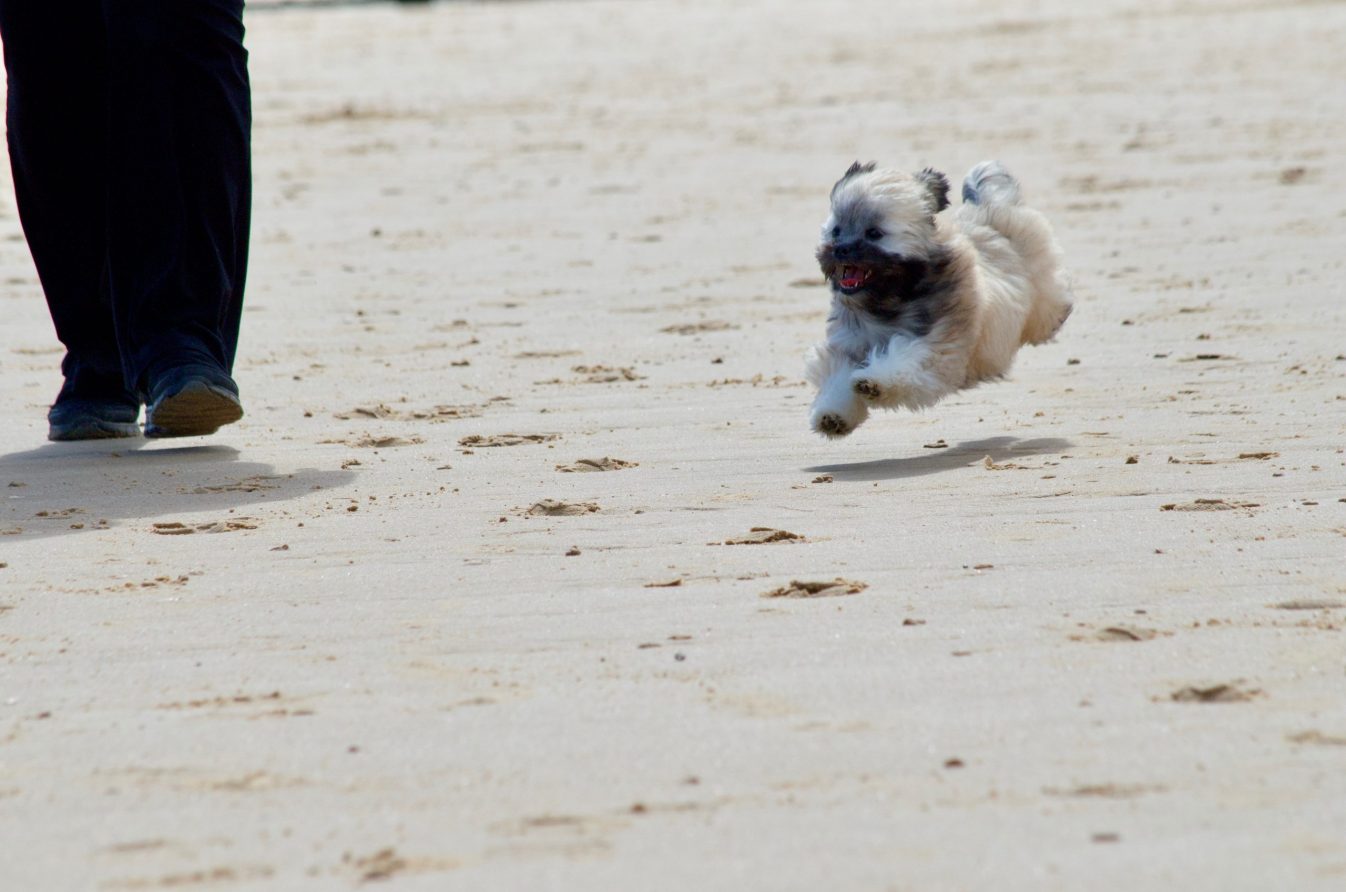Lhasa Apso dogs are small but fiercely independent dogs, best suited to colder mountainous climates. In such climates, body heat preservation is of greater importance than exerting lots of energy through exercise.
If you’ve read about the curious origins of the Lhasa Apso, you’ll know that the breed has ancient Tibetan origins. Many centuries ago, they were bred as watchdogs for Buddhist temples.
The Lhasa Apso, much like the Shih Tzu, has a short muzzle. They are a brachycephalic breed, which means they have a shortened head, with a flat nose and flat face. Excessive exercise can therefore lead to breathing difficulties.
The Lhasa breed can be extremely stubborn. If a Lhasa decides a walk has come to an end, they will happily plant their paws firmly onto the ground and be sure to let you know about it!
It’s still important though to ensure your Lhasa is getting ample opportunity to get out and about as often as possible.
How much daily exercise is required for a Lhasa Apso?
Lhasa Apso dogs need a moderate amount of exercise, consisting of a daily short walk of around 20 minutes duration.
The Lhasa Apso is not particularly energetic and therefore excessively long walks will not be necessary. In addition to a daily walk, your Lhasa will be able to further exercise through regular play, especially if you have a garden.
Although we have suggested that a 20 minute walk is probably sufficient, this doesn’t mean you’ll be doing harm to your pooch if you walk them for longer than this. Your dog will usually give you some indication about how much exercise they are willing to do.
Why is exercise so important for Lhasa Apso?
The Lhasa Apso doesn’t need huge amounts of exercise. However. there are some important reasons why they still need moderate amounts.
First and foremost, a daily walk will ensure you Lhasa maintains a healthy weight, which in turn will increase their life expectancy.
Exercise also keeps their heart and respiratory system in check, keeping unwanted health conditions at bay.
How long should I walk my adult Lhasa Apso for?
A short 20-minute walk one or twice a day should be enough to satisfy your Lhasa’s exercise needs. Don’t overdo it though. Remember, they’ve only got little legs!
As we said before, dogs have a funny way of telling you if they’ve had a long enough walk.
How long should I walk my Lhasa Apso puppy for?
Actually, you need to be a bit more careful with puppies as they are still developing their bones and joints. Overly strenuous exercise can be a hindrance to their development, and may actually end up doing unexpected damage.
Until they have been fully vaccinated, they will be confined to the home, so they will spend most of their time sleeping anyway. This allows them to get the perfect balance between sleep and exercise.
According to the Kennel Club, you should give a puppy an allowance of around 3-5 minutes of exercise per month of age. As Lhasa’s are smaller, we’d suggest going with 3 minutes. So when your Lhasa is 4 months old, that would be a 12 minute walk.
Puppies younger than 3/4 months ordinarily would only be exercising at home. That’s because they would not have had all of their vaccinations.
Do I need to walk a Lhasa Apso every day?
The short answer is yes, absolutely. It’s much better for your dog if they get a short walk once every day. It’s pretty crucial for them to explore the world with their curious senses as part of their development.
Every dog is different. You will be the best judge of how often your dog needs to be walked.
Dogs are learning all the time. This is why walking is a great opportunity to socialise with other dogs and humans.
If you have a specific concern about your own dog’s needs when it comes to any health matter, you should always contact your veterinarian for tailored advice.




Leave a Comment